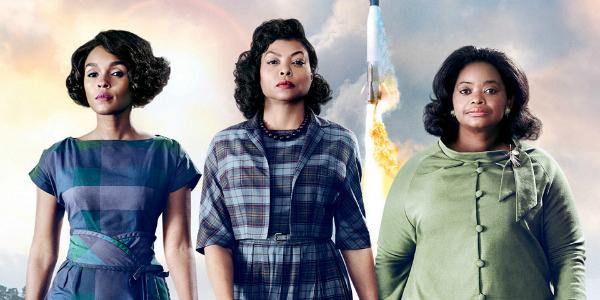Film exemplifies achievements, struggles
Triumph wins over adversity as movie shatters stereotypes
Mar 2, 2017
The Movie “Hidden Figures,” directed by Theodore Melfi and based on the book of the same title by Margot Shetterly, tells the true story of three African-American women who worked for the National Aeronautics and Space Administration (NASA) in 1961.
It takes place during a time when segregation was still a part of everyday life in the South and before the civil rights movement completely encapsulated the country.
The performances in the film are strong and highlight the struggles that African-American women went through during the early 60s, specifically telling the story of how Katherine Johnson, Dorothy Vaughan and Mary Jackson all made major contributions to space exploration while changing the history of aeronautics in the process.
Johnson, played by Taraji P. Henson, is the protagonist paid to double-check NASA’s mathematical calculations. The film documents that even in elementary school it was clear that Johnson was a numerical prodigy.
She wowed all of her teachers by solving elaborate mathematical equations from an early age.
Jackson, played by Janelle Monáe, started her career as a math teacher and then became the first black female engineer to work for NASA in 1958. Vaughan’s role, portrayed by Octavia Spencer, chronicles a mathematician who worked for the West Computing branch of the agency and founded the Analysis and Computing Division (ACD).
ACD was a racially-integrated group on the front lines of electronic computing.
Jackson eventually works her way to management status with NASA.
The movie starts by showing how the segregated group of African-American women computed all of the numbers manually, but IBM computers begin doing the same work — putting human number crunchers out of business. Vaughan demands a promotion to department supervisor so she can compete in the new technological environment, eventually leading her working in the IBM computer room.
All three women experience racism and sexism, from the snide remarks and mannerisms that Vaughan’s boss makes, to the long overdue promotion for which she works twice as hard as her counterparts to get.
The film also captures the darting glances that Johnson receives from office mates when getting a simple cup of coffee.
A buoyant soundtrack by Pharrell Williams and regular doses of comic relief help keep the tone optimistic amid all the serious oppressive issues at hand.
The film paints a picture of what it was like to work in this environment when Johnson’s co-worker, Paul Stafford, leaves her name off of the written daily reports purposely not giving credit to the driving force behind all of the group’s success.
This is largely due in part to his jealousy that within her first week of work, Johnson had already solved equations from top-secret mission files that contained redacted information within the documents.
When asked how she solved them, she said, “Well what’s there tells a story if you read between the lines, and hold it up to the light.”
In 1961, the United States is in the midst of competition with Russia to put the first man on the moon. The movie brings up the recurring theme that this was the “first” for many things. It was the first time there were African-American women working for NASA and Jackson became the first African-American woman to go to a prestigious all-white school for aeronautical engineering.
But in order to go to the school Jackson had to give the judge a compelling reason why she should be allowed to go, so she reminded him that he was the first person in his family to serve in the Army, just like she wanted to be the first engineer in hers.
This is what gains the judge’s empathy and she is admitted to the school for night classes.
When Johnson briskly walks back and forth between her office and the “colored” bathroom every day, this is a metaphorical mechanism to illustrate the oppressive times and how she had half as many hours in a day to get the same amount of work done as all her office mates.
She walks five miles during her day, but still manages to compute information that no one else in the office has the brains to match.
While trying to make a tricky calculation in order to save the lives of astronauts, Al Harrison, who is played by Kevin Costner, asks Johnson to think outside the box. The room of white faces asks what speed a space capsule must be traveling in order for the mission to be a success, and Johnson makes it look easy by concluding that it must orbit the Earth at 17,550 miles per hour off the top of her head, which silences the room, resulting in the men looking at her in awe.
This movie is an inspirational catalyst to propel future generations toward their dreams. These women defied all odds and achieved the unthinkable in America’s space race.
They displayed courage and audacity in a time when this country was on the cusp of abolishing legal segregation. Johnson is currently 98 years old and earned the Presidential Medal of Freedom and NASA Lunar Orbiter Award.
It was these hidden women and hidden numbers that put American astronauts into space.



